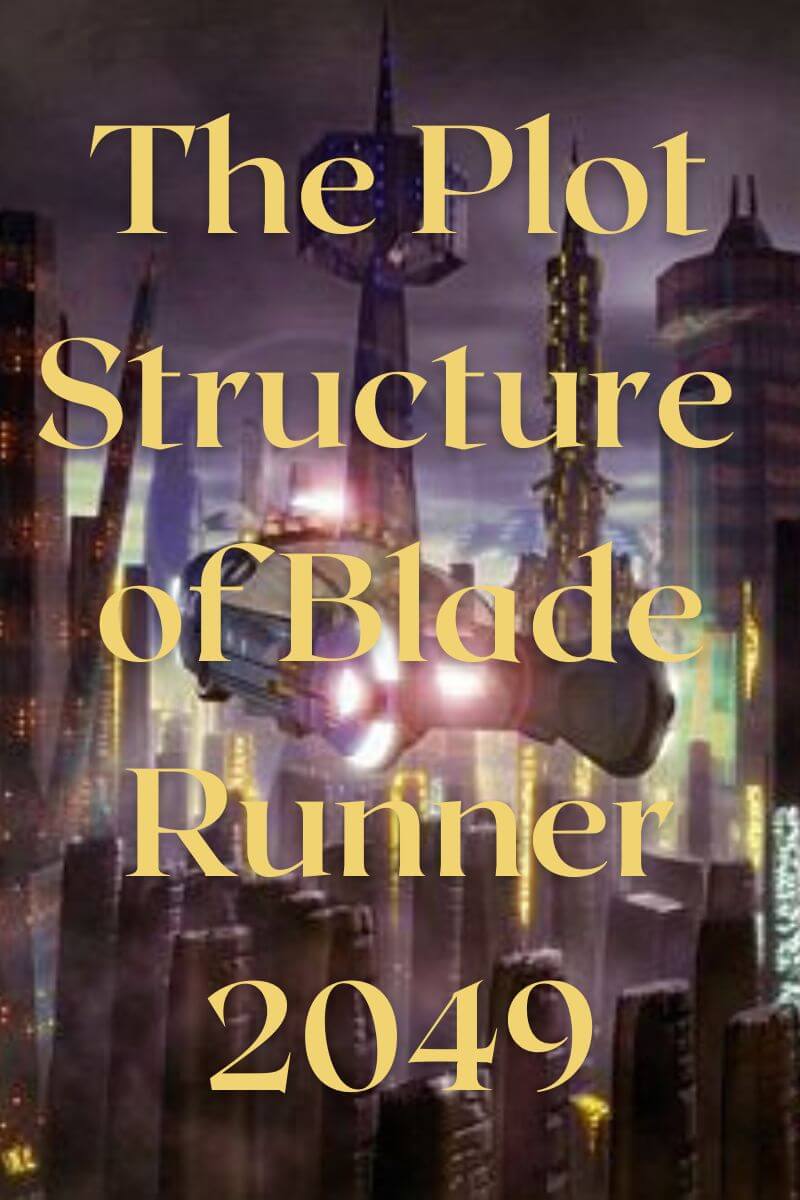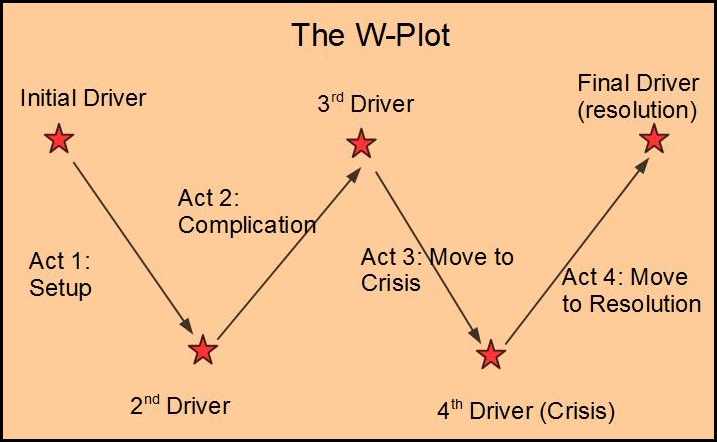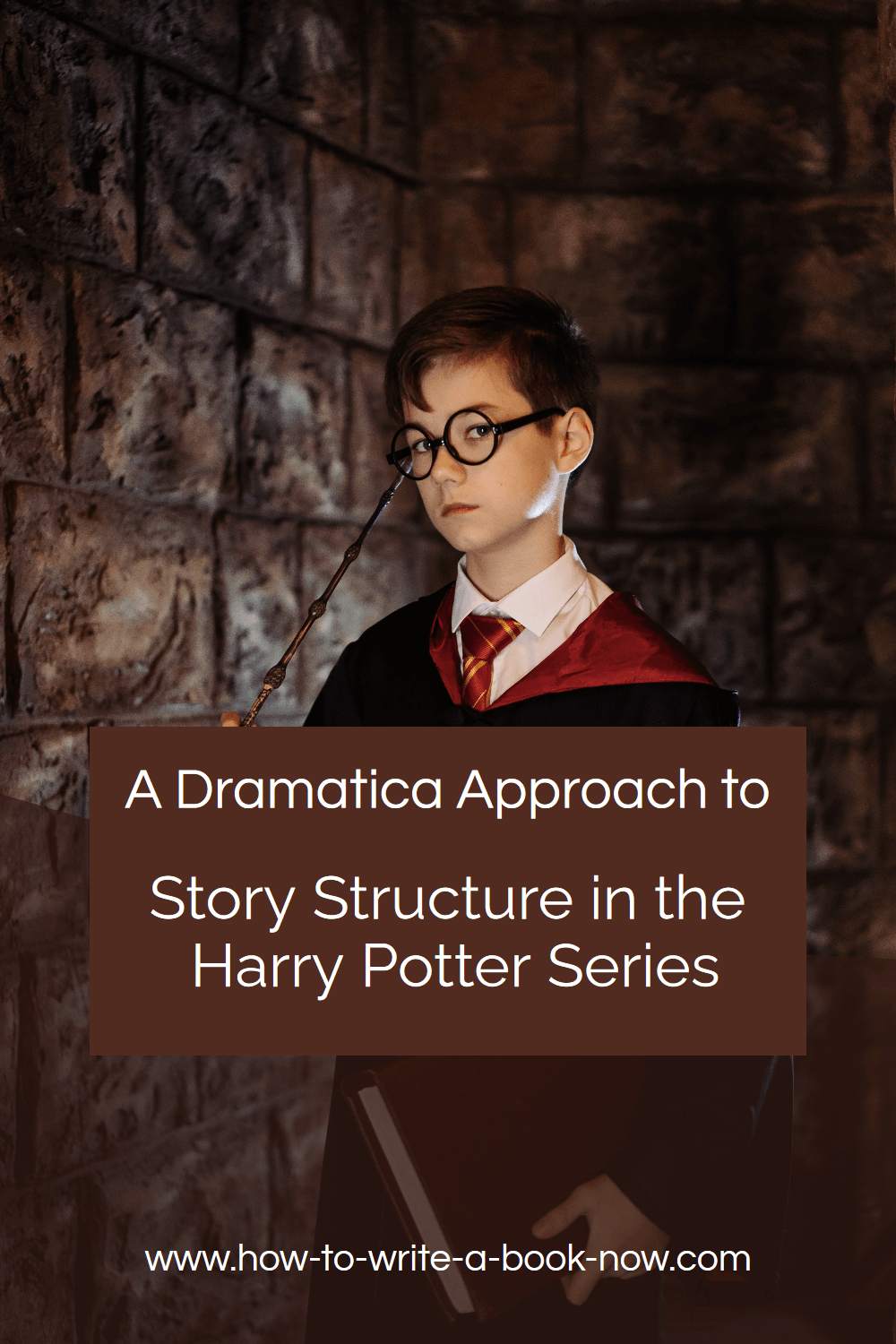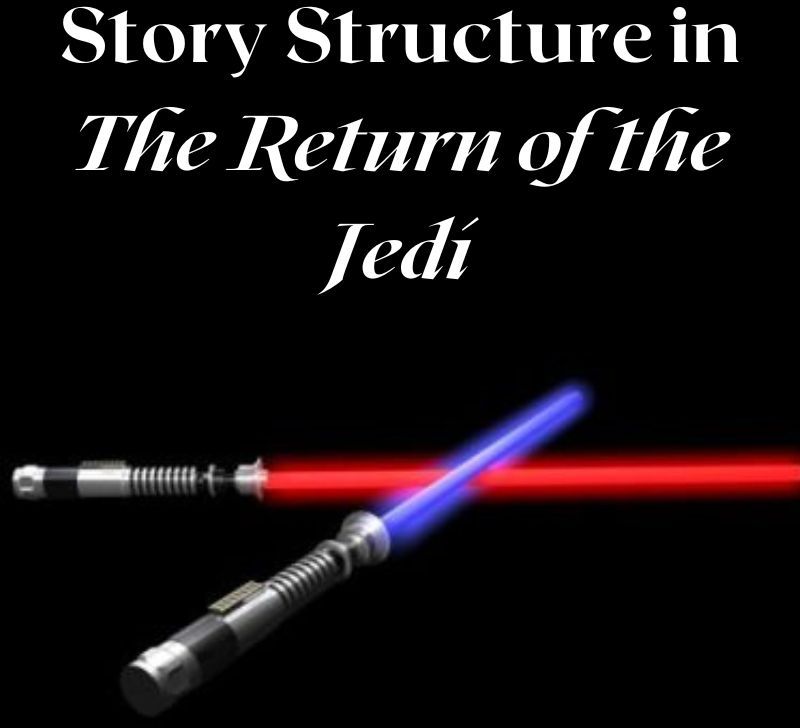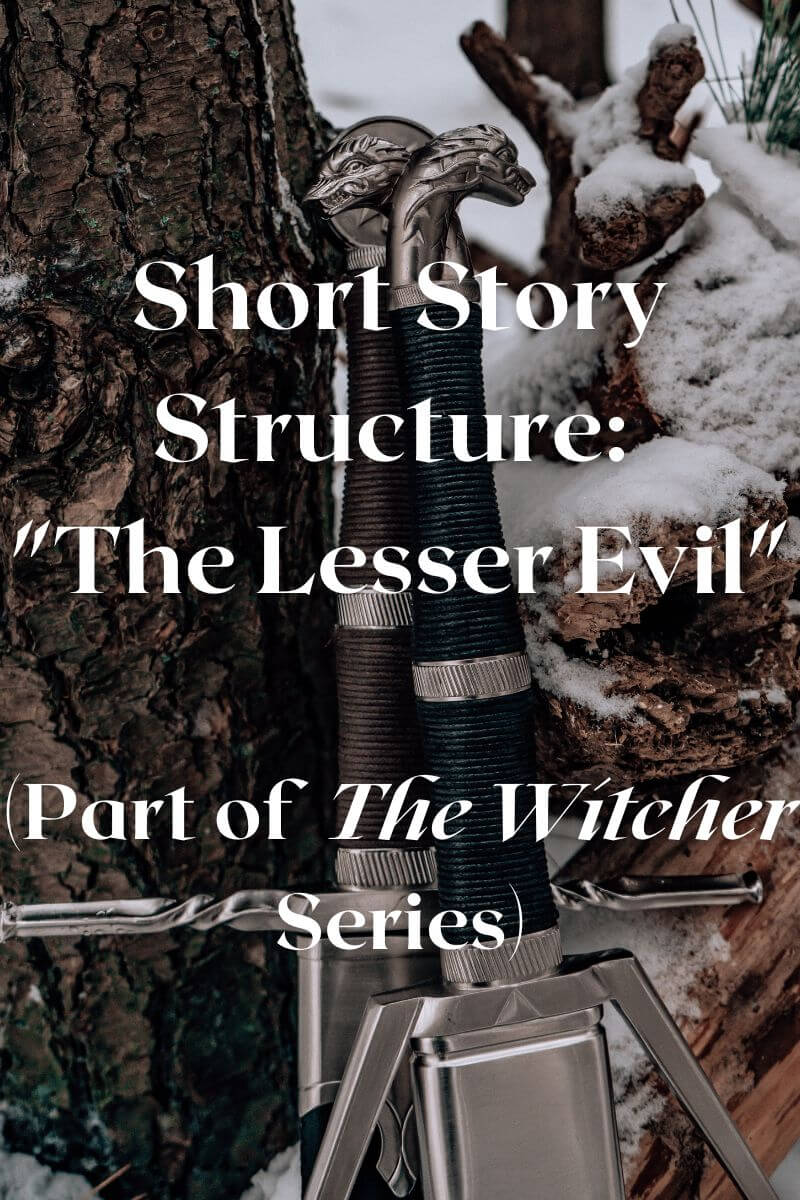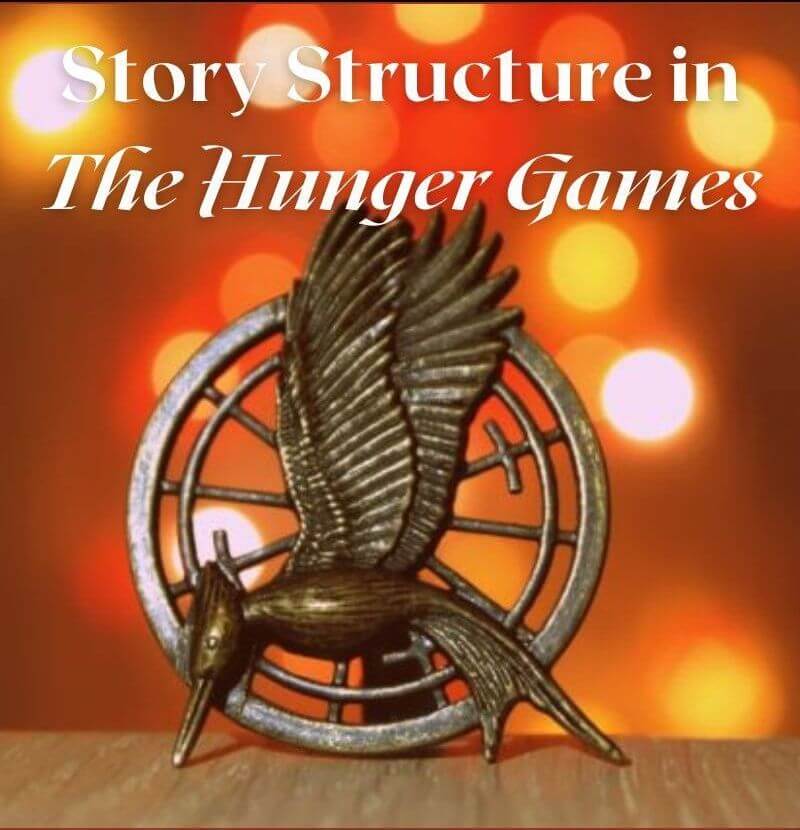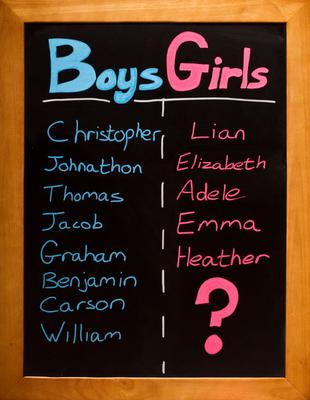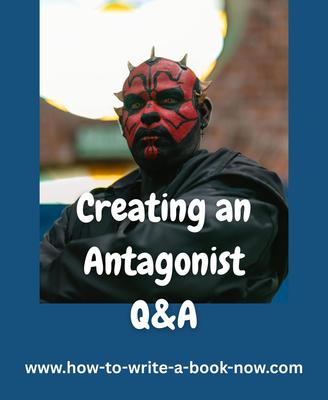Blade Runner 2049: A Dramatica Analysis
By Glen C. Strathy
Blade Runner 2049 (2017) is a sequel to the 1982 science fiction film, Blade Runner, which introduced film audiences to the subgenre of cyberpunk (or more precisely biopunk) -- a variety of dystopian science fiction set in futuristic metropolises in which the powerful enjoy immense luxury while most people live in a dirty, bleak, and impoverished environment. Against this backdrop, the plots of both films draw heavily on the Mystery/Crime genre.
As an Amazon Associate,
this site earns if
you purchase these movies...
Blade Runner 2049 takes place in a world where genetic engineering has made it possible to manufacture artificial people called "replicants" who are stronger than humans but cannot reproduce naturally. The replicants are treated as mere commodities -- slaves who can be killed by their owners at any moment and without remorse. Special police officers tasked with killing (or "retiring") renegade replicants are called blade runners. Like its predecessor, the film is concerned with the definition and value of human life
In Blade Runner 2049, we find that several important things have happened in this world since the previous film:
1. The job of blade runner has been handed over to a new generation of replicants. Unlike the early replicants who lived for only a few years, the new replicants have full lifespans and are programmed to obey their owners. However, they are not just property. They have private homes and can earn and spend money.
2. A new type of artificial human has been introduced to the world -- holographic people with artificial intelligence and personalities. Existing only as software and projections, they are tied to hardware boxes called "eminators." Lacking solid bodies, they cannot do physical labour or serve as prostitutes the way replicants can. They are marketed as companions to lonely men (presumably both replicants and humans).
3. Thirty years ago, a replicant woman named Rachael gave birth, something no other replicant has ever done. The father was Deckard, an arguably human blade runner. Deckard and Rachael were major characters in the first Blade Runner film.
Blade Runner 2049 concerns the threat to the world order posed by the existence of Deckard and Rachael's child, and what the various characters choose to do about it.
I will attempt to analyze the story from the perspective of Dramatica, as an illustration of how the theory works. I hope you have seen the film, because there will be spoilers. (If you haven't seen it, you can get more information at the internet movie database.) Also, I will do a little speculation on areas the film leaves ambiguous.
I'll start with the 8 Basic Plot Elements...
The 8 Basic Plot Elements in Blade Runner 2049
1. Goal: Gathering Information
The goal of Blade Runner 2049 is to prevent the
knowledge of how Rachael was able to give birth from becoming known.
Lt. Joshi, orders a blade runner named K to find and destroy all
evidence that the birth took place, including the child. All the characters are involved with or affected by this goal.
2. Consequence: Conceiving an Idea
Lt. Joshi is afraid that if people find out that a replicant gave birth, the line between human and replicant would dissolve. It is easy to see that this could lead to civil war. If replicants are no different than humans, they could claim human rights. They couldn't be enslaved or murdered.
(Of course, if that were true, then it would also be wrong to kill Rachael's child, as Joshi orders. I also can't help wondering if the opposite could happen. If humans are seen as no different than replicants, might humans lose their rights?)
It soon becomes clear that the one person who especially must not find out the secret behind the child's birth is Niander Wallace, owner of the corporation that makes replicants. Wallace wants to use the information not to elevate replicants to the status of humans but to breed them the way humans breed livestock. (Apparently, this would be faster than growing replicants in test tubes.) In other words, Wallace would exacerbate the threat of civil war by expanding the replicant population and removing fertility as the key trait that separates humans and replicants.
3. Requirements: Obtaining
Early in the film, Wallace obtains the bones of the dead Rachael. In order to prevent him from learning the secret to creating fertile replicants, he must not be allowed to get possession of Rachael's child, or Deckard. Reading between the lines, it seems likely that Wallace might try to combine Deckard's DNA with Rachael's in order to create another replicant child. Either way, possession of a replicant child would let Wallace obtain the information he seeks.
4. Forewarnings: Innermost Desires
Throughout Blade Runner 2049, the replicants
have a strong reaction to the idea of one of their kind giving
birth. Wallace's replicant
assistant, Luv, cries over Wallace's latest failure to engineer a
fertile replicant woman. K thinks that being "born" rather than manufactured means
having a soul. The replicant Sapper calls Rachael's
child a "miracle," and the other renegade replicants seem to
regard Rachael with a reverence befitting a religious figure,
carrying pictures that depict her as a Madonna. (This implies that they might see the child as a Saviour figure.)
These reactions speak to the replicants' deep desire to be more human. In a sense, the replicants are like orphans, and like all orphans they feel a longing for parents who can affirm their worth. Unfortunately, this desire only heightens the possibility of an eventual civil war when replicants demand to be acknowledged as the equals of humans.
At the same time, we see how the line between humans and replicants is already weakening in the face of some people's desires. Wallace and Luv show as little regard for human life as they do replicants, killing both whenever they disappoint.
5. Costs: The Present
Both K and Deckard are leading reasonably comfortable lives when the film begins, but they both lose their homes and their companions in the course of the story (Deckard's companion is his dog. K's is his holographic wife, Joi)
6. Dividends: Contemplation
In all the confusion over whether fertile replicants should be considered to have souls, the ultimate message of Blade Runner 2049 (which K comes to contemplate) is that having a soul is not the result of the code you are made of (genetic or binary), or whether you are born or manufactured. Rather, it is your actions that determine whether you have a soul. And by that standard, artificial people like K and Joi may have souls, while a human like Wallace may not.
7. Preconditions: the Future
At one point, Wallace offers Deckard a duplicate Rachael as a companion (and possible mother of his future children) in exchange for his cooperation, but Deckard rejects this because she is not the real Rachael.
(Though it's not stated, I suspect this duplicate may have been cloned from Rachael's bones. Wallace says Rachael is the lock and Deckard is the key, which suggests to me that Wallace hopes to breed these two to create another replicant child).
8. Prerequisites: Changing One's Nature
Ultimately, the solution K chooses is to make it appear to Wallace that Deckard dies in a car crash. This stops Wallace from pursuing the knowledge while letting Deckard and his child live.
Okay, so those are the basic elements of the plot. Now let's consider how the story is structured.
The Plot Structure of Blade Runner 2049
I'm fond of the W-plot as a way to describe the four-act structure of stories. Here's what it looks like...
You'll note that there are five major turning points in the story, called Drivers, that appear at the beginnings and ends of the acts.
Typically in a Mystery story, the four acts unfold like this:
- Act One is about the discovery of a body.
- Act Two is an investigation.
- Act Three is a narrowing of options for solving the mystery.
- Act Four presents the solution.
Blade Runner 2049 follows this pattern. However, I'm going to use Dramatica to give me a deeper understanding of the structure.
Dramatica describes a story in terms of four major throughlines or arcs that run in parallel throughout the acts. Using the Dramatica software lets me assign each throughline a different domain (either Situation, Activity, Fixed Attitude, or Manipulation) according to its thematic concern. Here's how they look to me in Blade Runner 2049...
Overall Throughline
Sometimes called the external or main plot, this throughline is concerned with the pursuit of the story goal and the other basic elements. Since the goal of Blade Runner 2049 is Gathering Information, that puts the overall throughline in the domain of Activity
Main Character Throughline
This throughline is concerned with the main character's inner conflict. K is the main character in Blade Runner 2049, and his big concern is whether or not he has a soul and what he should do as a result. In the beginning, he is sure he doesn't have a soul, but things happen to suggest he might. A concern of Contemplation puts this throughline in the domain of Fixed Attitude.
Impact Character Throughline
The impact character in Blade Runner 2049 is Joi, K's holographic wife. She is primarily concerned with creating a better present reality for K, which puts her throughline in the domain of Situation.
Relationship Throughline
The relationship between the main and impact characters (K and Joi) has its own arc, which is in the domain of Manipulation with a concern of Conceiving an Idea (since they are both moving toward the idea that they might be more than just artificial people -- perhaps something "special," as Joi puts it).
Each of these throughlines unfolds through four stages which Dramatica calls "Signposts" that correspond to the four parts of a dramatic arc:
Setup --> Complications --> Crisis --> Resolution.
Act One shows the setup of each throughline. Act Two shows the complications, etc.
With that in mind, here's how I would describe the structure of Blade Runner 2049.
(Note: if you are using the Dramatica software and trying to duplicate the storyform I'm using, you may notice that I am playing with the order of the thematic concerns. This is because I'm more concerned with making sense of the story I see than forcing it to fit the model. Besides, according to Melanie Anne Phillips, the order is not that important. Note also that signposts are generally broken into sequences and interspersed within each act. I'm describing them separately so you can see how each one works.)
The Plot in More Detail...
Act One
Initial Driver
Rachael gives birth to her and Deckard's child 30 years before the film begins. As is often the case, this event is not shown directly. Instead, we find out about it as the story progresses.
Main Character Signpost 1: Contemplation
K appears to be a model replicant at first. He carries out his task of retiring the renegade replicant, Sapper, without question and gets a perfect score on his baseline psych test afterward. However, before he dies Sapper tells K that he would not kill his own kind so easily if he had witnessed a miracle (i.e. a replicant giving birth). This is confirmed when K tells his boss, Lt. Joshi, that he would have qualms about killing anything that was born and might therefore have a soul.
Impact Character Signpost 1: Present
At K's apartment we meet Joi, K's holographic wife. Joi provides K with an illusion of a nice home, overlaid upon his otherwise bleak existence. Joi's one limit is that she is not solid and cannot touch anything (though she can produce enough heat to light K's cigarette).
Relationship Signpost 1: Developing a plan
K and Joi appear to care about each other's happiness, and because of this K buys Joi a mobile eminator so she can leave the apartment with him and experience more of the world. The first foray is a trip to the roof to experience rain.
Overall Signpost 1: Obtaining
K finds a flower placed by a dead tree on Sapper's farm. On a hunch, he has the soil scanned. Beneath the tree, the police find a buried chest of bones.
Act Two
Driver 2:
Examination of the bones reveals they are those of a replicant woman who gave birth.
Overall Signpost 2: Gathering information
Ordered by Joshi to track down and destroy all evidence of the replicant offspring, K visits the Wallace Corp. and checks the serial number of the dead replicant. He discovers she was Rachael, an experimental model who fell in love with a Blade Runner named Deckard 30 years ago. Interviewing Deckard's old partner, K confirms that Deckard left his job to be with Rachael.
Meanwhile, Wallace learns of the investigation and orders his replicant, Luv, to track K and get all the information that K discovers. (He wants to know how to create fertile replicants to expand his slave labour force.) Luv promptly steals the bones from the police morgue, killing the medical examiner Coco in the process.
In a similar move, Freysa, leader of the renegade replicants, orders the replicant prostitute Mariette to find out what K knows and to plant a tracking device on him.
K finds a baby sock at Sapper's farm and a photo of a woman with a baby standing in front of Sapper's tree. On the tree, he finds a date of birth. K burns Sapper's farm and uses the date of birth to find evidence of two children (a boy and a girl) born on that date. The children have identical DNA, which is impossible . The records say the girl is dead, but K traces the boy to an orphanage. Unfortunately, the records have been removed.
Main Character Signpost 2: Memories
K tells Joshi about his memory of hiding a toy horse as a child, which he is certain is a fake memory of the type implanted in all replicants to make them more human. However, K leaves out the fact that the date on the toy in his memory was the same as the date on the tree.
At the orphanage, K finds the toy horse
exactly where he remembers hiding it. K starts to wonder if his
childhood memory is genuine and if he is actually Rachael's son. K
visits a memory maker named, Ana, who lives in an isolated bubble due to an immune deficiency. Ana tells him his memory is a genuine
memory, not an implant. K concludes that he is Rachael's son.
The revelation upsets him so much that he fails his next baseline test.
Impact Character 2: Progress
Using her mobile eminator, Joi is able to travel with K on his investigation. She tries to persuade him that his childhood memory might be real, that he is "special," meaning someone born, who might have a real soul. She suggests he take a real name -- Joe.
Relationship Signpost 2: Playing a role
Mariette tries to proposition K, but
when Joi's eminator makes a recognizable sound, Mariette concludes,
"You're not into real girls." Joi overhears this comment
and it makes her worry about being an inadequate wife. Joi
decides she must provide K with real sex (because, since he's really
human, he should have it). To make up for her lack of solidity, she
hires Mariette to stand inside her body so K can feel a solid body
while he makes love with Joi (or is it both women at once?). While the trick seems to work, Joi
doesn't feel great about it the next morning. She dismisses Mariette
with the words "I'm done with you," as if Mariette was a
mere object, to which Mariette replies, "I've been inside you.
There's not as much there as you think." The exchange shows how both replicants and holograms feel inadequate because they are less than human.
Act Three
Driver 3 (point of no return):
K lies to Joshi, saying that he found and killed Rachael's son. Joshi is glad, but tells him that, because he failed his baseline test and went outside the boundaries of his investigation by visiting Ana, he will be fired and retired. She bends the rules a little to give him 48 hours in which to disappear.
Impact Character Signpost 3 (Personal Crisis): Future
Joi knows that the people coming to retire K will interrogate her for all K's secrets, so long as a copy of her remains in the eminator in their apartment. So she insists K erase her from that eminator and break the antenna on her remote eminator. This makes her future more precarious, since she now only exists in the remote eminator and will die if anything damages it. But she consoles herself with the idea that mortality makes her more like a real wife for K. When Joi dies later, her final words to K are "I love you."
(The message is that by sacrificing her future out of love for K, Joi proves she has a soul.)
Main Character Signpost 3, Part One: Impulsive Responses
(I divided this one, since K's personal crisis comes a little later in this story.)
K's impulse is to track down Deckard, who he thinks may be his father. He finds him in an abandoned hotel in the ruins of Las Vegas. When they meet, K's attitude toward Deckard seems a little judgmental -- reminiscent of the attitude many children have to toward fathers who were absent.
Overall Signpost 3: Understanding
Deckard can't confirm if he is K's father because he never met his child and had to stay away because the family was being hunted. But he helps K understand why the records are confusing and incomplete -- it was a deliberate smokescreen to protect the child by hiding its existence.
Driver 4 (Crisis):
Luv arrives in Las
Vegas and captures Deckard. (K is wounded in the attack.)
Relationship Signpost 3 (Crisis): Changing one's nature
The relationship experiences a black
moment when Luv crushes Joi's remote eminator, killing Joi.
Main Character Signpost 3, Part Two (Personal Crisis): Impulsive Responses
After Luv's attack, K is rescued by the renegade replicants. K confesses to Freysa that he thinks he is Rachael's child, but Freysa assures him that Rachael's child was a girl. Many replicants were implanted with the memory of hiding the toy horse to give them a compulsive desire for freedom (apparently in violation of the rules).
Act Four
Main Character Signpost 4: Innermost Desires
Freysa, asks K to find and kill Deckard. This will stop Wallace from getting information that will help him get hold of Rachael's child. The renegades plan to produce Rachael's child after they've built an army and use her to claim the same rights and freedoms as humans.
(I find the thematic message of Blade Runner 2049 gets a little muddy here since Freysa clearly doesn't want Wallace to create a race of fertile replicants, even though fertility seems to be something the replicants covet. Also, both Wallace and the renegades want more replicants created, yet their purposes are not aligned. The renegades want to use the miracle of replicant birth to make humans acknowledge their humanity, whereas Wallace wants to use it to turn birth into a commodity, which could further dehumanize replicants and humans alike.)
At any rate, Freysa gives K some
important advice: that he should have a more meaningful purpose to his life than being a blade runner.
Impact Character Signpost 4: Past
K sees a copy of Joi on a billboard, but with Wallace's dead eyes. She calls him Joe and promises to fulfill his needs. This is what she was when he first met her -- nothing more than a commodity, an illusion sold by Wallace, programmed to call all men Joe.
I see at least two ways K might interpret this (the film does not make clear which interpretation K chooses):
1. K might conclude that Joi was never more than a program created by Wallace and never exceeded her programming. But, unlike her, K has a chance do something real and meaningful.
2. K might decide Joi's actions and choices made her so much more than her programming intended, and by her example he can also transcend his programming.
Either way, seeing the billboard helps K decide to act.
Overall Signpost 4: Doing
Wallace tries to get Deckard to help him discover the secret to replicant fertility. He claims Deckard and Rachael were intentionally designed to fall in love and reproduce. (Like its predecessor, this film is deliberately ambiguous about whether Deckard is human or replicant.) But Deckard rejects this idea, saying, "I know what's real." Wallace offers Deckard a replicant companion who is a copy of Rachael. (Again, I suspect he wants the two to breed and produce a new child.) But Deckard rejects the copy, so Wallace has Luv kill her.
With the hope of new replicant babies dashed, Wallace orders Luv to take Deckard off-world where they can extract information from him more forcefully. But K intercepts the convoy, kills Luv and the other guards, and rescues Deckard. By now, K has realized that the real child of Rachael and Deckard must be Ana, the memory maker. Since Wallace will assume Deckard died in the crash, K is free to take Deckard to see Ana.
Relationship Signpost 4: Conceiving an idea
When K unites Deckard and Ana, (two people who, like K and Joi, cannot physically touch) K affirms the validity of his own nonphysical relationship with Joi.
Story Dynamics
The dymanics of Blade Runner 2049 are also worth noting.
Since the Goal is achieved (the information about Ana's birth is kept hidden from Wallace and the world), the Outcome is a Success.
K is a change character, since he goes from a meaningless life of obediently killing replicants to fighting for a world in which replicants can have real family and relationships. He surpasses his programming, rejecting his orders to kill the replicant child and instead protects Ana and Deckard from those who would turn replicant fertility into a commodity to be exploited.
K appears to die in the end from wounds he incurred when rescuing Deckard. But because, like Joi, his death has meaning, he is at peace in his final moments, which gives him a Judgment of Good.
Thus, Blade Runner 2049 has a Comedy or Happy Ending.
- Home
- Story Analyses
- Blade Runner 2049
